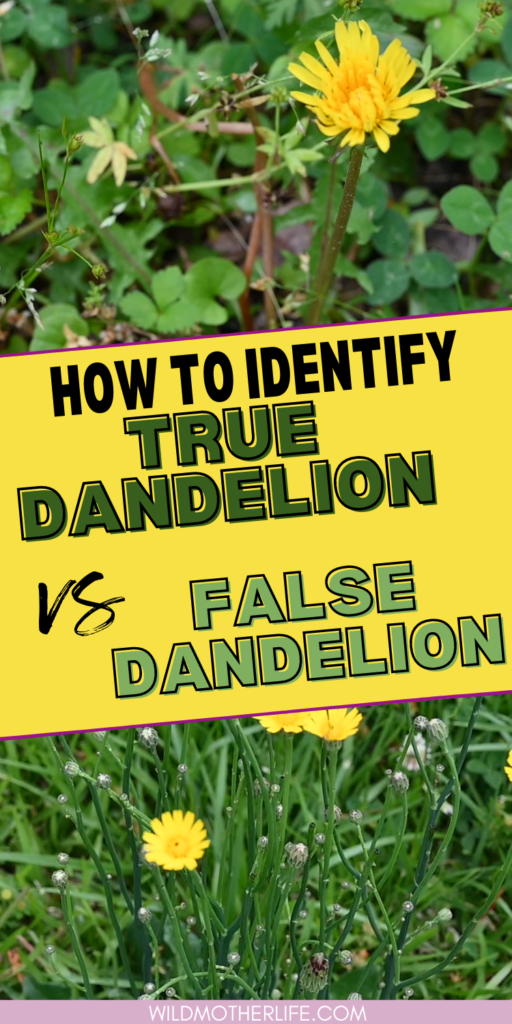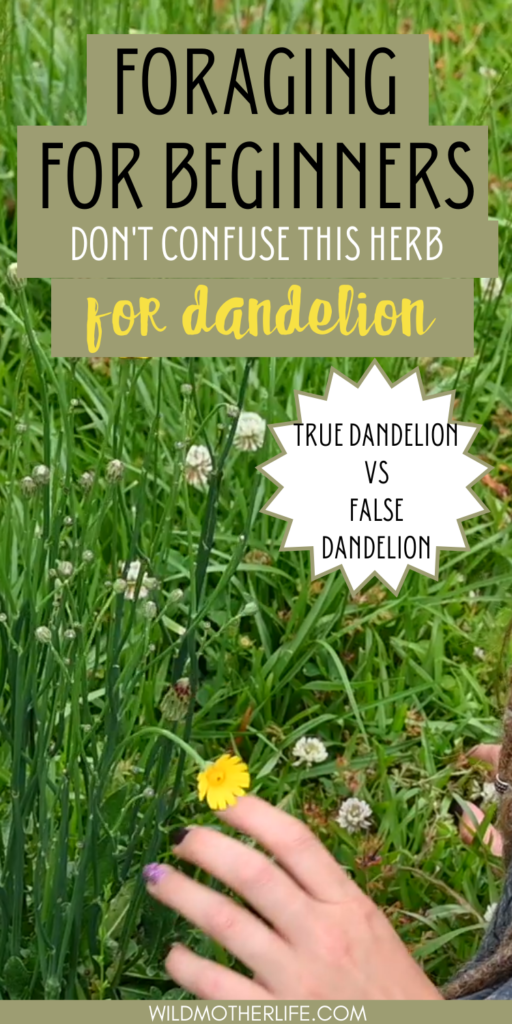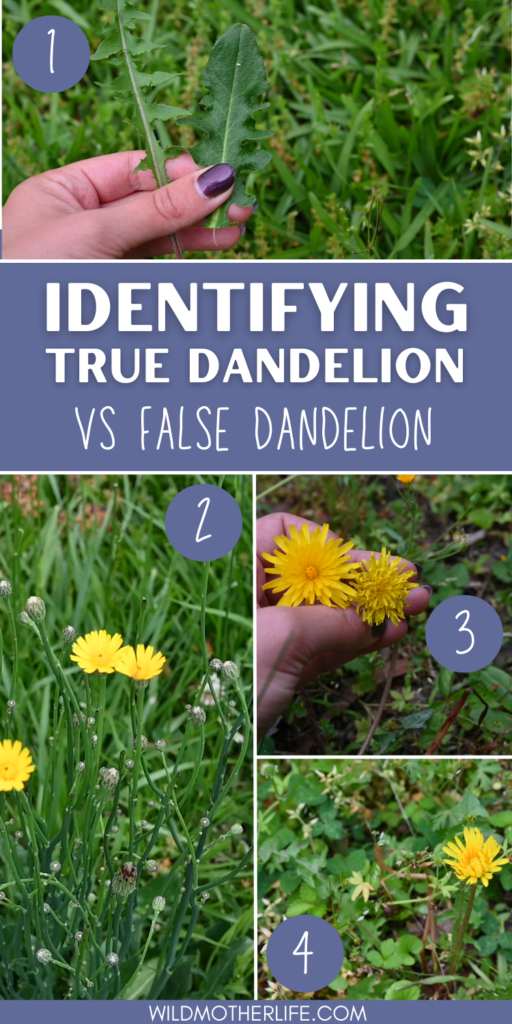
Spring has arrived and with it the arrival of dandelions and all sorts of new spring plants and greens to forage! Learning how to identify true dandelion is easy and simple once you know what to look for.
Most people recognize dandelion, however did you know that there is a look-a-like plant that is super common and looks very similar to dandelion? It’s called False Dandelion, or Cat’s Ear, and I see it getting commonly confused and mislabeled as dandelion.
A few summers ago, a friend offered to let me come forage her dandelions. I was new to studying herbs and foraging and I did not ID the dandelions before harvesting them. Turns out I harvested a basket full of false dandelions! I knew something looked off while I was harvesting them, I just couldn’t put my finger on it!
Where can I purchase Dandelion?
I purchase all of my dried herbs from Mountain Rose Herbs – their quality is incredible and they have a huge selection of herbs, including dandelion!
Are False Dandelions Toxic?
The good news is that False Dandelion/Cat’s Ear is NOT poisonous. In fact, false dandelion and true dandelion both have a unique nutritional profile of their own. However, it’s always important to be 100% confident in the identification of the plant you are foraging!
Now let me show you how to identify true dandelion!
True Dandelion vs False Dandelion
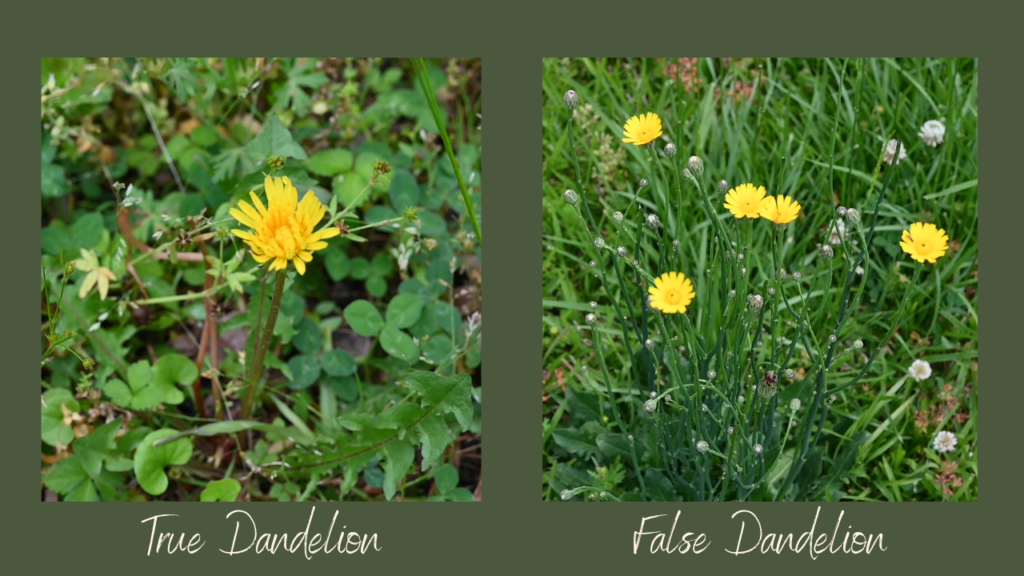
Stems and Buds:
The easiest way learn how to identify true dandelion vs false dandelion, is by looking at the stems.
True Dandelion only has one flower/bud per stem. False Dandelion has many buds or flowers growing on each stem!
Super simple and easy to tell the difference!
Leaves:
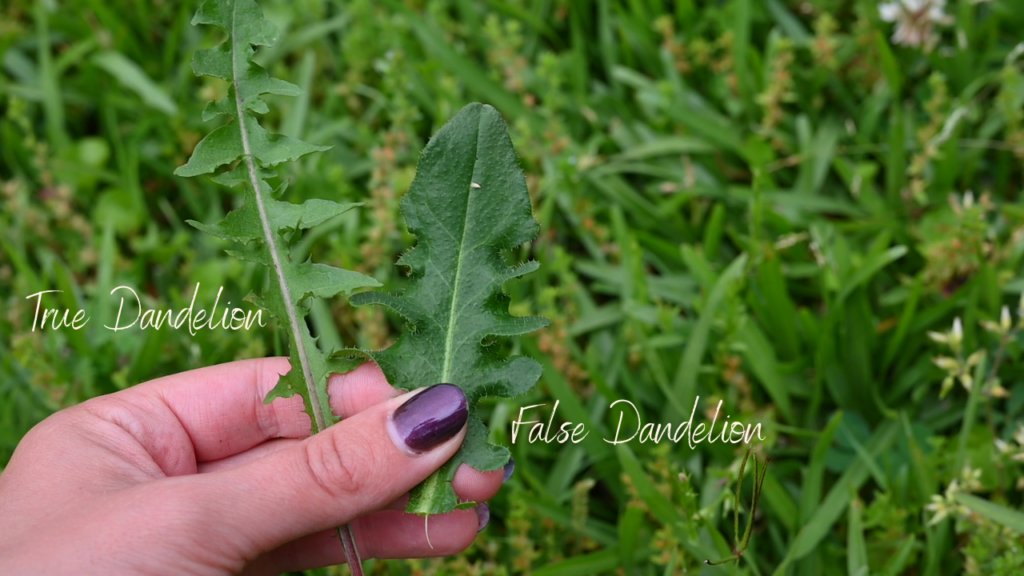
There are several ways to tell the differences between the leaves when learning to identify true dandelion vs false dandelion.
- True Dandelion has very very FEW hairs on the leaves and they’re not fuzzy at all. False Dandelion has very “fuzzy” leaves with lots of hair on them!
- True Dandelion has deep grooves or “teeth” in the leaves. False Dandelion does not have deep grooves.
- True Dandelion leave are typically long and thin. False Dandelion leaves are shorter and usually thicker.
Flowers:
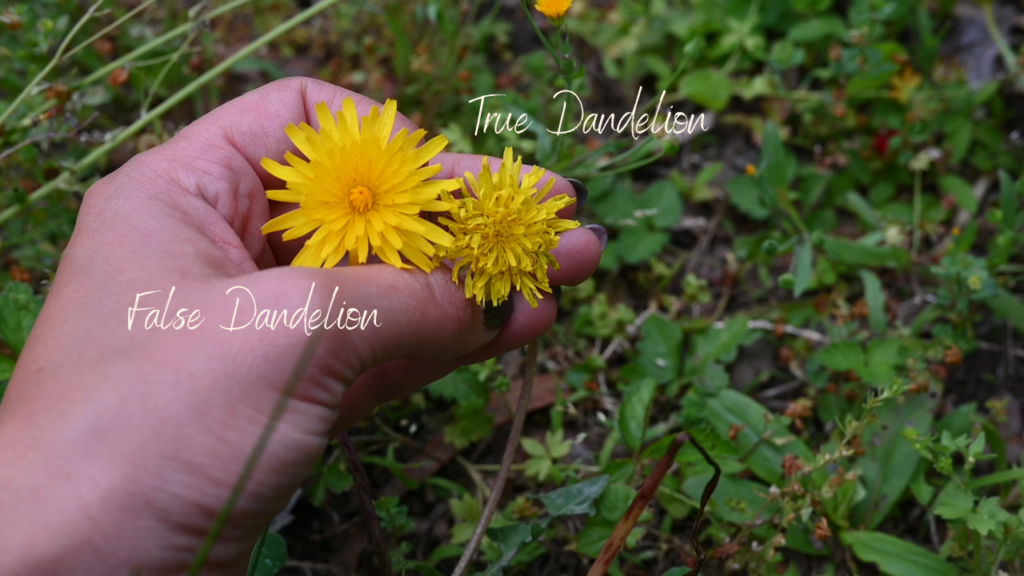
The flowers look different to me too!
- True Dandelion flowers appear more “fluffy” and less organized to me (depending on the stage of development they’re at). False Dandelions flowers have petals that appear very synchronized and orderly.
- I’ve also noticed (at least in my yard) that True Dandelion flowers have lots of tiny bugs that like to live in them, while false dandelions don’t tend to have the same amount of bugs!
My top tips for identifying wild plants when foraging:
- First, identify with an app on your smart phone
- Second, identify with a book (or three!)
- Third, look up a YouTube video of someone else describing the plant and cross check with your plant
I recommend always verifying with at least 3 sources that you have identified the right plant – especially when you’re first starting!
Other herbal posts you might like:
- Best Herbal Books for Beginners
- Herbs to take when you’re sick
- Five Herbs Every Mother needs in her life
Watch this post on my YouTube Channel!
